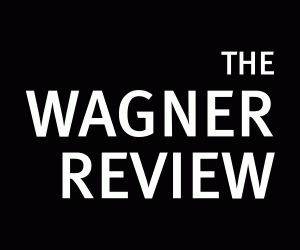Kristy Brown & Liz Casey
On November 19th, 2014, the New York City Department of Homeless Services (DHS) shelter census reported a little over 58,000 people experiencing homelessness–which includes over 12,000 families with children and 11,000 single adults. These numbers are representative of the homelessness crisis the city currently faces, with the greatest number of homeless families and individuals living in the city since the Great Depression. As the de Blasio Administration and DHS begin to recalibrate the city’s response to the increasing need for homelessness prevention programs, more affordable housing options, and a larger safety net for individuals and families unable to maintain stable housing, it is vital that government administrators collaborate more closely with service providers and other agency partners to develop and implement a more nuanced, multi-pronged approach. In order to break the cycle of chronic homelessness for those who are struggling the most, the chronically homeless population should receive ongoing support while they are in the shelter system and after placement in more permanent housing.
Income inequality continues to rise, which exacerbates the cyclical nature of poverty, and leads to additional difficulties for those facing homelessness to achieve and maintain stable housing. Amidst the rising inequality in the last decade, the city treated homeless individuals and families with children with separate yet similar one-size-fits-all processes. For homeless individuals and families alike, there is no one-size-fits-all solution.
The US Department of Housing and Urban Development (HUD) defines chronic homelessness as someone who has been “homeless in shelter or on the street for a year or more with a disabling condition, or someone who has experienced four episodes of homelessness in the last three years.â€For some individuals and families, an isolated catastrophic event (i.e., illness or death in the family, getting laid off, or struggling to find employment) led to their first bout of homelessness. A temporary rental subsidy or rental arrears grant to avoid eviction may be all they need to get back on track toward stable housing. However, individuals and families with parents or heads of household who lack education and/or job skills, or have a disability, illness, or struggle with substance abuse/addiction (or any combination of these factors) are most likely to become chronically homeless. This vulnerable population stays in temporary housing longer and has difficulty maintaining housing outside of the shelter system, even with rent subsidies and other forms of public assistance. Due to increasing demand, longer length of stays, and limited capacity, particularly in family shelters–as featured in the New York Times’ notable Dasani series–many clients that need significant rehabilitation remain stuck in shelters with no clear path toward a truly permanent solution.
New York State has a unique “right to shelter†mandate for single men, women, and families, meaning New York City must provide temporary emergency shelter to anyone experiencing homelessness at any given time. Many other states have adopted rapid re-housing policies that aim to place clients in permanent housing with very short stays in city shelters via programs such as rental subsidies and other affordable housing options. New York City has experimented with such policies to varying degrees of success; however, for the chronically homeless, temporary emergency shelters tend to become a long-term default solution because the rapid re-housing programs do not offer enough financial and social support to be sustainable. Individuals and families can wait for months or even years for a permanent housing option. Additionally, capacity is limited among shelter staff to provide enough support to help residents access the right level of in-depth social services they need to learn to be self-sufficient.
More customized support must occur at every step of the process, beginning with intake until after permanent housing placement. According to Coalition for the Homeless, this first year after leaving the shelter is the time period in which individuals are at the highest risk of recidivism, or falling back into homelessness. After exiting the shelter system, whether through rental subsidy or other supportive housing programs, clients should receive regular and comprehensive case management services tailored to their ability to live independently. Although homeless families and individuals face many barriers to permanent housing and the city’s problems are complex, city officials, led by de Blasio’s administration, can combat homelessness with multi-pronged, tailored approaches to effectively address this growing crisis, both before and after individuals and families attain permanent housing.
Kristy Brown is a second-year full-time MPA student at NYU Wagner. Her favorite course this semester is focused on the intersection of operations and policy as it relates to family homelessness in New York City. In addition to her coursework, Kristy works as a freelance photographer and serves as the lead co-chair of the City Year New York Alumni Board. She tweets @brownkristine. Â
Liz Casey is a second year MPA student with a passion for homelessness and housing policy. She currently does research for Everytown for Gun Safety, working towards common sense legislation to save lives from gun violence. You can follow her rants on politics and pizza on Twitter @LCommathoughts.




